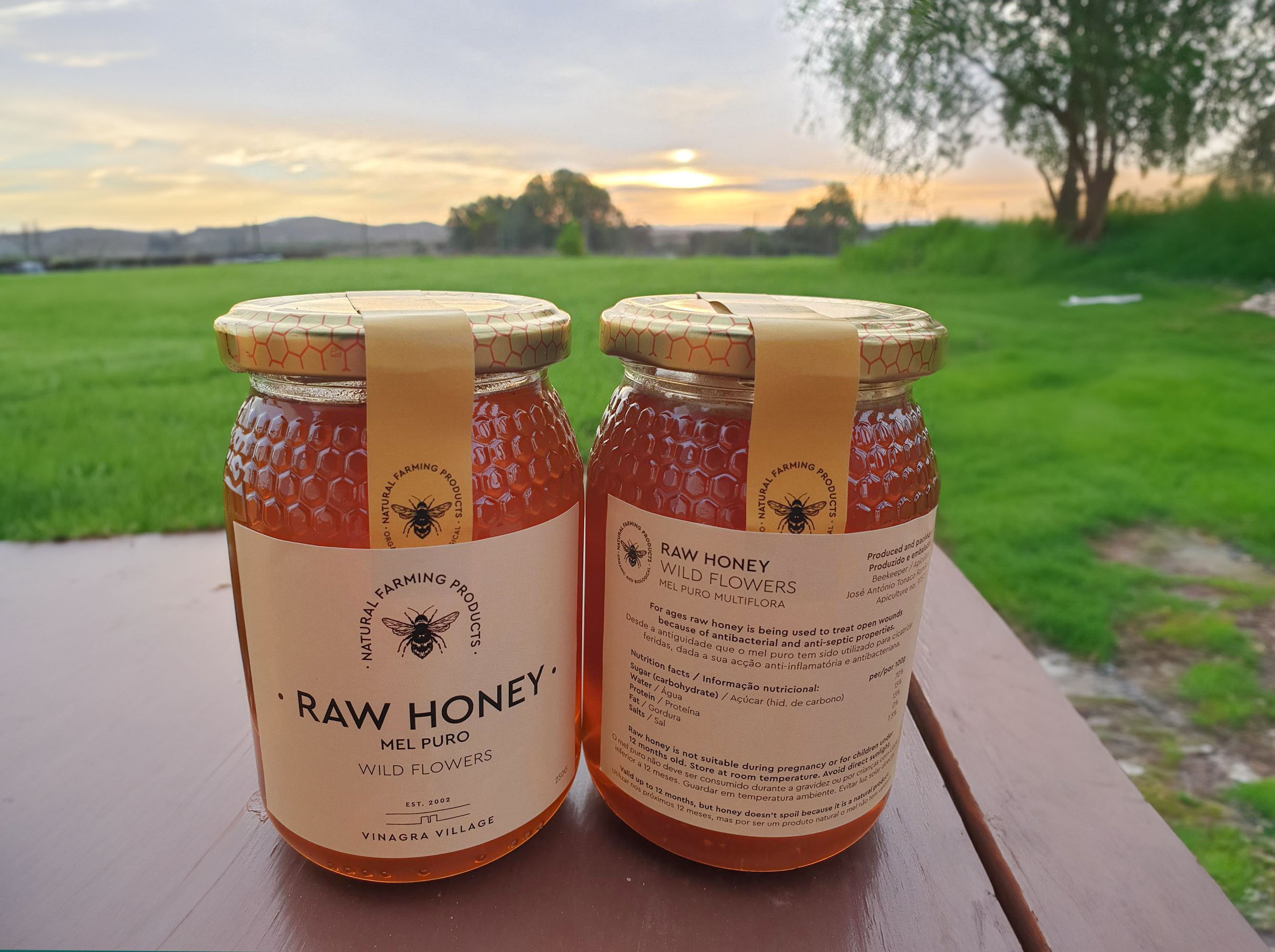Vinagra Village's daily boost of vitality and energy with it's Organic Natural Raw Honey
Vinagra Village's Organic Natural Raw Honey
Derived primarily from the nectar of a variety of wildflowers on Vinagra Village's Organic Farm, our honey presents an array of flavors and hues each year. This diversity is influenced by blooming flowers, as a result of our soil regeneration efforts, and also weather patterns.
The color and taste of the honey vary based on the nectar sources that honey bees visit. This year, our honey boasts a light color and a pristine taste with subtle lavender notes, attributed to the dry spring. In contrast, last year's honey featured a deeper color with vibrant orange and eucalyptus undertones, courtesy of abundant spring rains and flourishing orange trees. Regardless of the year, the taste lingers on the palate after consumption. Similar to wine, honey deserves admiration and respect in its tasting.
Vinagra Village's Raw Honey is produced in very limited quantities—only 200 kgs this year—and remains unprocessed, rich in nutrients and antioxidants that enhance immunity. Nothing is added, and nothing is removed, ensuring its nutritional benefits remain intact. It is very exclusive.
Honey is renowned for its healing properties, transcending civilizations for ages. Wild honey has been used to treat open wounds due to its antibacterial and antiseptic qualities, stemming from the alchemical fusion of bees collecting nectar, pollen, and resins from flowers.
At the core of Vinagra Village permaculture business lies the bees, influencing the decisions we make. They tirelessly pollinate our plants, flowers, fruits, and vegetables. We take immense pride in our sustainable production and the reciprocal efforts we contribute to our ecosystem.
It's worth knowing that honey bees can travel up to 3 km to gather nectar, pollen, water, and bee glue used to seal cracks in the hives. In a day, a single bee can visit over 600 flowers, repeating this routine multiple times. To craft one of our 500 g jars of honey now on sale, bees need to collect nectar from over a million flowers.
Now, let's explore more intriguing bee-related facts. One single bee generates roughly one twelfth of a teaspoon of honey in her short lifetime. Due to the substantial workforce required, hives can accommodate between 20,000 and 60,000 bees. The hive's temperature must remain a constant 33 degrees Celsius. During temperature drops, bees cluster together to preserve warmth, while in the summer, worker bees fan the hive's interior. Their delicate wings flutter at a remarkable rate of 12 to 15,000 times per minute, sustaining optimal conditions for the queen bee and brood.
A worker bee visits 50 to 100 flowers before returning to the hive, engaging in multiple rounds throughout the day. Her lifespan can extend up to six weeks, during which she covers a distance of 800 km.
Regrettably, and for reasons still unknown, colonies of bees have been mysteriously disappearing. In our case, two colonies abandoned their hives never to return. Studies confirm a gradual decline in honey bee populations over the past decade. For readers interested in obtaining our exclusive honey, it can be purchased now or ordered.

